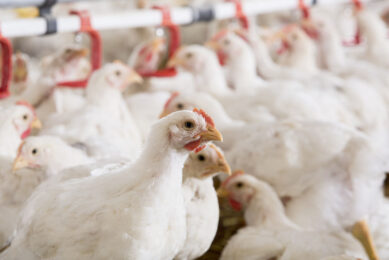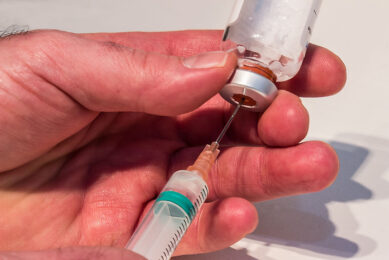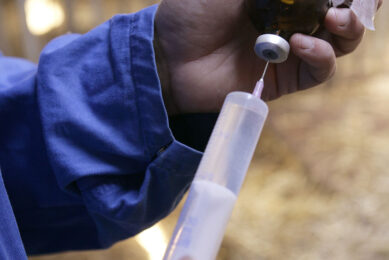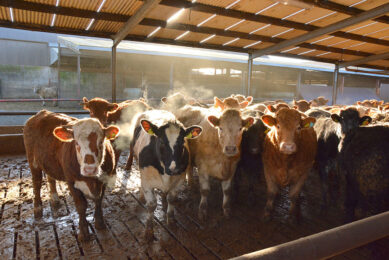SDPP enables reduction of antibiotics and zinc use
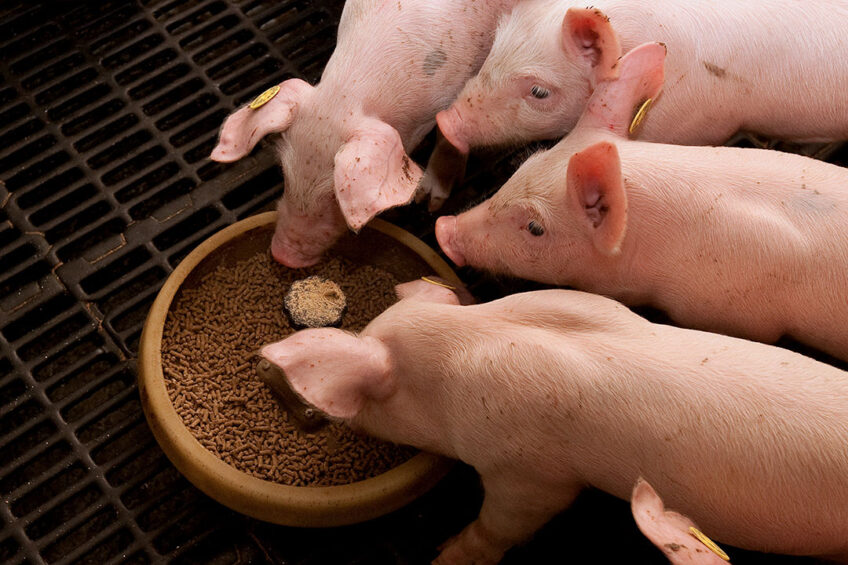
Animals play a significant role in direct and in-direct human exposure to resistant bacteria. Reducing antimicrobial use in human and veterinary medicine is necessary to protect public health. Therapeutic use of ZnO in weaner diets is not a viable alternative. Spray-dried plasma is.
The number of people dying from infections with resistant bacteria is increasing, a part of these infections come from an animal origin. Looking for example to ESBL, shows the majority of all ESBL infections can be attributed to human-to-human contact, many can be linked to animal contact (direct and indirect) and from food of animal origin. Antibiotic use in animal sectors also contributes to environmental exposure via manure. Reducing antimicrobial use is a one-health challenge. Human and veterinary medicine must limit the use of antibiotics to a maximum to combat antimicrobial resistance.
There should be no need for standard inclusion of antibiotics in feed as a growth promoter or for preventive treatments. To reduce the need to use antibiotics to cure animals or for metaphylactic use, animals must be healthy and not become sick.
Biosecurity is necessary and good feeds and housing conditions are critical to make animals resilient and less prone to antibiotic treatment. Feed can promote health and improve gut and general resistance against disease. Alternative approaches in feed formulation need to go beyond removing antibiotics from the formulation and replacing them with additives that mimic the antibacterial effect. It also encompasses restricting protein contents, providing proteins with good digestibility, proper balancing of nutrients and using ingredients and additives that promote health and improve digestion.
Positive effects of SDPP
Spray-dried plasma protein (SDPP) is an important bio-functional ingredient that promotes health of young animals. It contains all the proteins of blood, from which the functionality is conserved by the processing methods applied. SDPP has beneficial effects in pigs, but also in young chickens, shrimp and fish they improve performance and health. Weaning of piglets is an important transition periods in a pig’s live, it is also the phase where most antibiotics are used. During this phase the diet is changing, stress occurs, and often piglets are exposed to a new environment and to new pen mates. This makes it an ideal event for disturbance of the intestinal balance and opportunity for new pathogens to enter. Weaned piglets that are fed diets containing SDPP show performance improvement, which is shown in many studies over the last three decades. A number of these studies is showing the effect of plasma in comparison with in feed antibiotics. Torrallardona et al., 2003 made a comparison where plasma (7%) replaced the use of colistin. Pigs were challenged with E. coli K99 after weaning. The piglets receiving plasma or colistin performed better than the group without treatment. The effect of colistin was numerically a little stronger than plasma. The best performance was seen in the group receiving plasma and the antibiotic.
In another study, 6% SDPP and/or 250 mg/kg colistin + 500 mg/kg Amoxycillin was used. Animals were challenged with an E. coli K88 infection at day 4 after weaning. Here SDPP showed a little stronger effect than the antibiotics. And again, an additive effect was shown. The colisitin and amoxycillin used in these 2 experiments should not be used in feed today but the experiments show that SDPP is then an effective alternative. A study performed at Wageningen University investigated whether a high dose of Zinc could be replaced by SDPP. The results indicate that in week 1-2 post weaning, the effect of ZnO on growth performance was higher than the effect of plasma inclusion, but in the 5-week experimental period, pigs receiving in the first 2 weeks 5% inclusion followed by another 2 weeks with 2.5% and finally in the last week 1% SDPP, performed equally well as the ZnO group and better than the control treatment, whilst other groups receiving lower plasma inclusion or for shorter time having an intermediate performance. Only the ZnO treatment improved the faecal consistency of the pigs.
In experimentally infected pigs where plasma replaced pea protein isolate was equally effective in reducing souring scores after an E. coli challenge as 2880 mg/kg Zn as ZnO.
Also, in a study under standard Chinese housing and feeding conditions the performance of plasma fed piglets was equivalent to a group on antibiotics and zinc in the formulation.
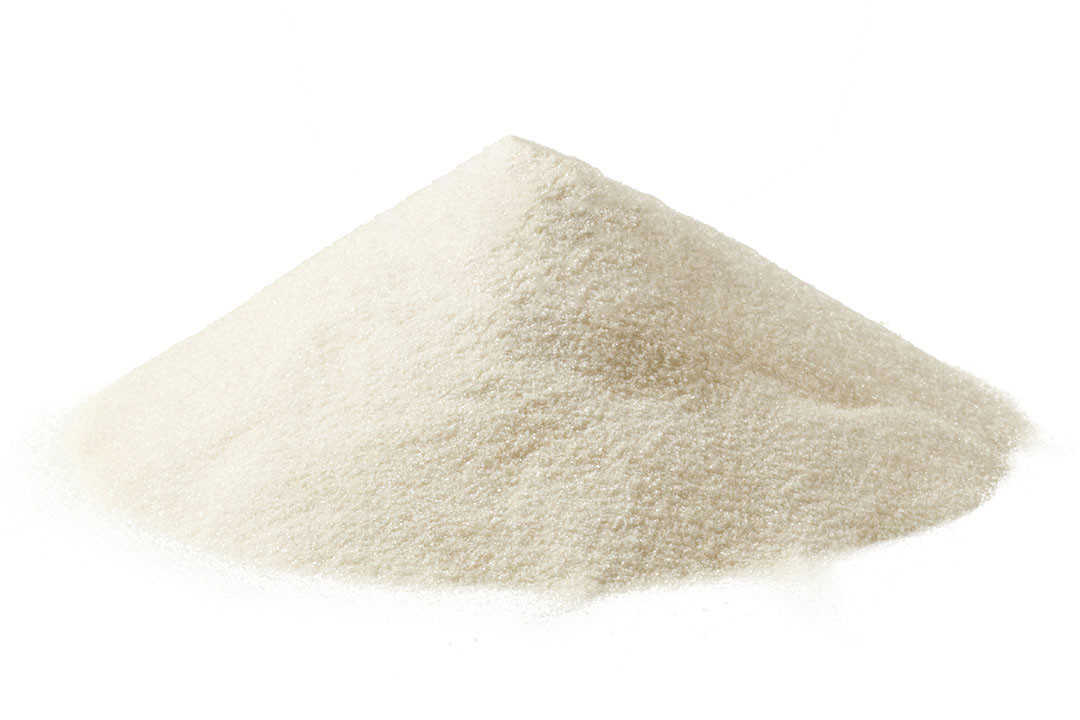
Pooled plasma
Animal based proteins are valuable feed ingredients. Especially SDPP has an outstanding record of improving performance in young piglets. The mentioned studies show that weaned piglets have the same performance when zinc or antibiotics are replaced by SDPP.
The beneficial effects relate to the high digestibility and palatability of the plasma proteins, but more importantly to the immune-active peptides in the plasma. Especially the immunoglobulins which have a local protective effect at the gut wall. The immunoglobulins prevent that ingested pathogens can colonise, infect the animals or disturb the gut microbiota. The SDPP on the market is a product of pooling, bringing all possible antibodies together. Consequently, the plasma pool is effective against many endemic viruses and bacteria circulating in the pig population, giving protection against any common pathogens that pose a risk for young animals. It is interesting to note that in numerous virus safety studies undertaken by the blood product producers, the mechanisms constituting the beneficial effect of SDPP becomes tangible. Neutralising antibodies present in pooled plasma prevents the infection of studied viruses in cell culture assays and in piglet bioassays, for example for circo-virus (PCV2), parvovirus and corona viruses.
Because of the antibodies in SDPP fed to piglets, bacteria and viruses will neither infect the cell, nor colonise the gut. In this way infection is prevented and unbalancing of the microbial ecosystem will be less likely.
Besides the local gut effect, studies suggest that there are also systemic health effects. One of the things observed is that SDPP fed piglets had a stronger protection after vaccination against respiratory diseases compared to non-SDPP fed piglets. In the body the different lymphoid tissues in different parts of the body (gut, lung, skin etc.) are inter-connected. The SDPP will first affect the gut associated lymphoid tissue and therefore there is also an effect on the lymphoid tissues in other parts of the body.
Critical or transition periods in juvenile life are also seen in poultry and aqua culture. The number of studies in these animal species is increasing. And also, in these species antibiotics are applied to overcome the challenges at the critical transitional stages of live. Young chicks grow faster and less mortality is seen in shrimp with feeds that contain SDPP.
Conclusion
To increase the sustainability of animal production it is necessary to reduce the reservoir and selection of resistant bacteria. Using plasma as a feed ingredient shows to improve the health of young animals. Therefore, spray-dried plasma can be a part of the solution in reducing the need for antimicrobial treatments.
References available on request.



